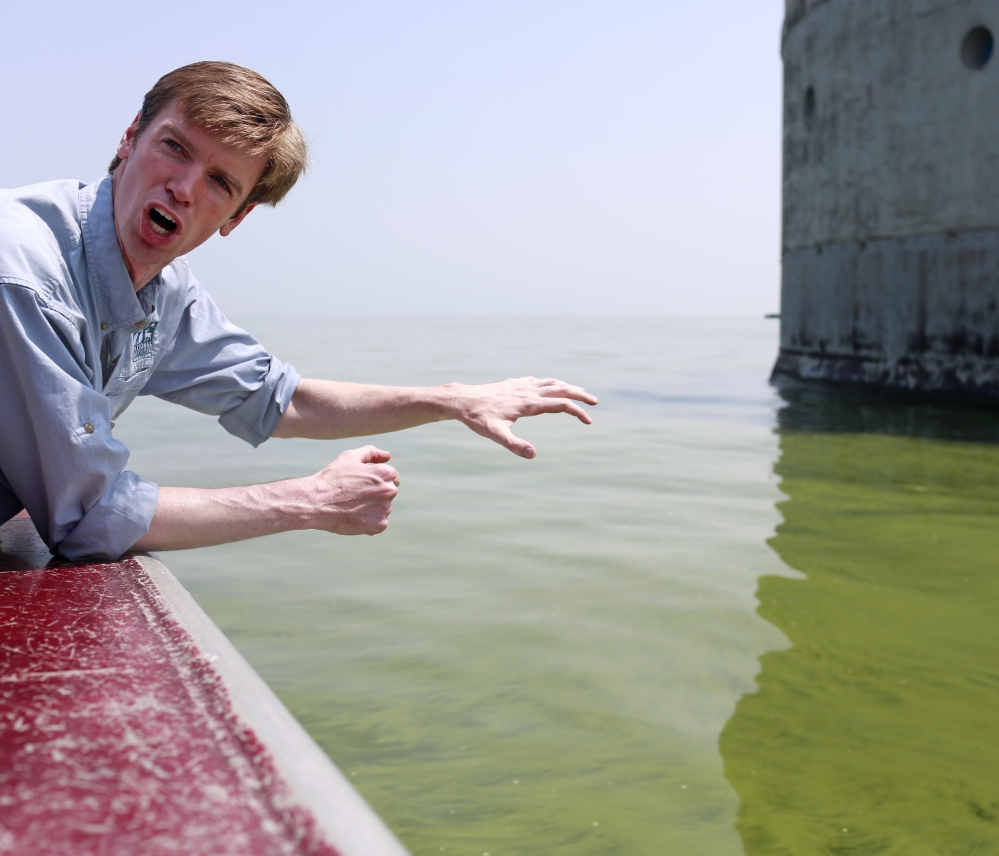TOLEDO, Ohio — The toxins that contaminated the drinking water supply of 400,000 people in northwest Ohio didn’t just suddenly appear.
Water plant operators along western Lake Erie have long been worried about this very scenario as a growing number of algae blooms have turned the water into a pea soup color in recent summers, leaving behind toxins that can sicken people and kill pets.
In fact, the problems on the shallowest of the five Great Lakes brought on by farm runoff and sludge from sewage treatment plants have been building for more than a decade.
While residents around Ohio’s fourth-largest city were being told to avoid drinking tap water for a second day, discussion began to center around how to stop the pollutants fouling the lake that supplies drinking water for 11 million people.
“People are finally waking up to the fact that this is not acceptable,” Toledo Mayor D. Michael Collins said.
City and state officials monitoring the water were waiting for a new set of samples to be analyzed Sunday before determining if the water was safe.
“This is not over yet,” said Collins, who said some samples have showed decreased levels of toxins in the water.
Toledo officials warned residents not to use city water early Saturday after tests at one treatment plant showed readings for microcystin above the standard for consumption, most likely because of the algae.
Drinking the water could cause vomiting, cramps and rashes. Health officials advised children and those with weak immune systems to avoid showering or bathing in the water.
Worried residents told not to drink, brush their teeth or wash dishes with the water descended on truckloads of bottled water delivered from across the state as the governor declared a state of emergency. The Ohio National Guard was using water purification systems to produce drinkable water.
Some hospitals canceled elective surgeries and were sending surgical equipment that needed sterilizing to sites outside the water emergency, said Bryan Biggie, disaster coordinator for ProMedica hospitals in Toledo.
The National Oceanic and Atmospheric Administration released a satellite image showing a small but concentrated algae bloom centered right where Toledo draws its water supply, said Jeff Reutter, head of the Ohio Sea Grant research lab.
The bloom was much smaller than in past years and isn’t expected to peak until early September. But instead of being pushed out to the middle of the lake, winds and waves drove the algae toward the shore, he said.
“Weather conditions made it such that bloom was going right into the water intakes,” said Reutter, who has been studying the lake since the 1970s, when it was severely polluted.
“We’re right back to where we were in the ’70s,” Reutter said.
Almost a year ago, one township near Toledo told its 2,000 residents not to drink or use the water coming from their taps. That was believed to be the first time a city has banned residents from using the water because of toxins from algae in the lake.
Researchers largely blame the algae’s resurgence on manure and chemical fertilizer from farms that wash into the lake along with sewage treatment plants. Leaky septic tanks and stormwater drains have contributed, too. Combined, they flush huge amounts of phosphorus into the lake.
Environmental groups and water researchers have been calling on Ohio and other states in the Great Lakes region to drastically reduce the amount of phosphorus flowing into the lake. Ohio lawmakers this past spring took a step toward tackling the algae problem when they enacted a law requiring most farmers to undergo training before they use commercial fertilizers on their fields, but they have stopped short of mandating restrictions on farmers.
Copy the Story LinkSend questions/comments to the editors.



Success. Please wait for the page to reload. If the page does not reload within 5 seconds, please refresh the page.
Enter your email and password to access comments.
Hi, to comment on stories you must . This profile is in addition to your subscription and website login.
Already have a commenting profile? .
Invalid username/password.
Please check your email to confirm and complete your registration.
Only subscribers are eligible to post comments. Please subscribe or login first for digital access. Here’s why.
Use the form below to reset your password. When you've submitted your account email, we will send an email with a reset code.